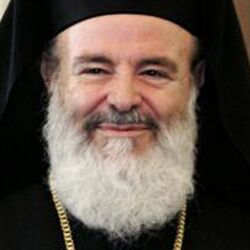
Greek Orthodox Leader Allies With Rome
Pope Benedict xvi’s goal of unifying Christianity under Catholic rule came closer to fruition when, for the first time ever, the leader of the Orthodox Church of Greece accepted the pope’s invitation to officially meet with him in Rome.
Talks between Pope Benedict and Archbishop Christodoulos began on December 14 and focused on ending the split between the two churches.
“It is necessary to develop cooperation between Christians in each country of the European Union, so as to face the new risks that confront the Christian faith, namely growing secularism, relativism and nihilism,” said Pope Benedict.
Benedict and Christodoulos signed a joint declaration that called for “constructive theological dialogue” on Christian unity.
Archbishop Christodoulos made history by becoming the first leader of the Greek Orthodox Church to visit a pope at the Vatican since the Great Schism of 1054. He declined former Pope John Paul ii’s invitation, but that didn’t stop Benedict from issuing another.
This pope has made it one of his primary goals to unify the Christian world. Just recently, Benedict signed a similar declaration with Patriarch Bartholomew i, the spiritual leader of the 250 million Orthodox Christians worldwide, on December 1.
Benedict also met with Rowan Williams, archbishop of Canterbury and the spiritual leader of 77 million Anglicans, in November. Both of these visits were primarily focused on fostering stronger ties between the churches.
Now the Vatican is planning a meeting between the pope and the head of Russia’s Orthodox Church.
These visits and joint declarations are aggressive moves by the pope to achieve his goal of bringing Christianity under Catholic rule once again.
For more than a decade, the Trumpet has foretold that the Catholic Church will successfully incorporate the Orthodox and Anglican churches back into its fold. To find out where this “church unity” in the Christian world will ultimately lead, read our article “Returning to the Fold.”




